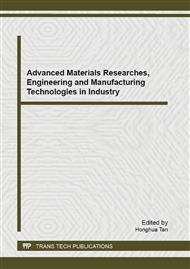p.372
p.376
p.382
p.388
p.392
p.396
p.400
p.404
p.408
Catalytic Reaction-Nanogold Resonance Rayleigh Scattering Method for the Determination of Trace Tellurium
Abstract:
In 6 mol/L HCl medium, TeO42- is reduced by NaH2PO2 to Te that catalyze NaH2PO2 reducing HAuCl4 to form gold nanoparticles (AuNPs), which exhibited a strong resonance Rayleigh scattering (RRS) peak at 370 nm. With the TeO42- concentration increased, the catalytic reaction enhanced and formed more AuNPs that resulting in the RRS peak increased. Under the chosen conditions, the RRS intensity at 370 nm enhanced linearly with the concentration of TeO42- in the range of 12.5-287.5 nmol/L. This RRS method was sensitivity, selectivity, and simplicity.
Info:
Periodical:
Pages:
392-395
Citation:
Online since:
September 2013
Authors:
Price:
Сopyright:
© 2013 Trans Tech Publications Ltd. All Rights Reserved
Share:
Citation:


